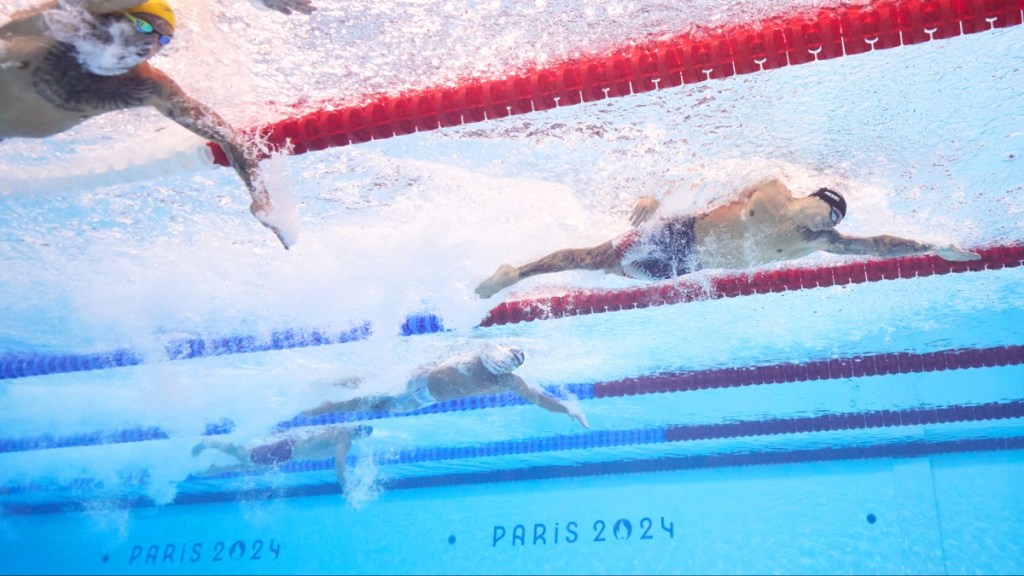Many nations are participating in swimming events at the 2024 Paris Olympics and the sport includes various categories like freestyle, breaststroke, backstroke, and butterfly, along with medleys and relays. Like a number of other sports, swimming also has highly specific regulations regarding what athletes can and cannot wear, and changes made to these regulations over the years have left some viewers confused as to what is and isn’t permitted. Let’s take a look at why swimmers cannot wear full-body swimsuits at the Olympics.
Why are full-body one-piece swimsuits banned at the Olympics?
Full-body swimsuits are banned at the Olympics to prevent any swimmer from getting an unfair advantage.
More than a decade ago, swimmers shaved their body hair and wore suits that covered least of their skin. This ensured minimum resistance, enhancing their speed in the water. However, companies soon started producing advanced full-body suits that gave swimmers even more advantages. This also led to the breaking of many swimming records due to the faster times acquired because of the suits.
Later, in 2008, for the Beijing Olympics, Speedo came up with what they called the world’s fastest swimsuit. Given the name LZR Racer, this suit helped swimmers swim faster providing better water-repellency and resistance to chlorine. Further, many other brands came out with even more technologically advanced swimsuits, which negatively affected the competitive dynamic of the sport.
Following this, effective January 1, 2010, World Aquatics decided to ban high-tech full-body swimsuits. This ban took place so as to not give any competitor an unfair advantage. As per the World Aquatics guidelines for swimwear used in the 2024 Paris Olympics, all swimwear has to be submitted to World Aquatics for approval first. Men can only wear suits from the waist to the knees, while women can wear suits that extend from the shoulders to the knees. Additionally, competitors also have to follow specific guidelines for other equipment like swimming caps and goggles.










